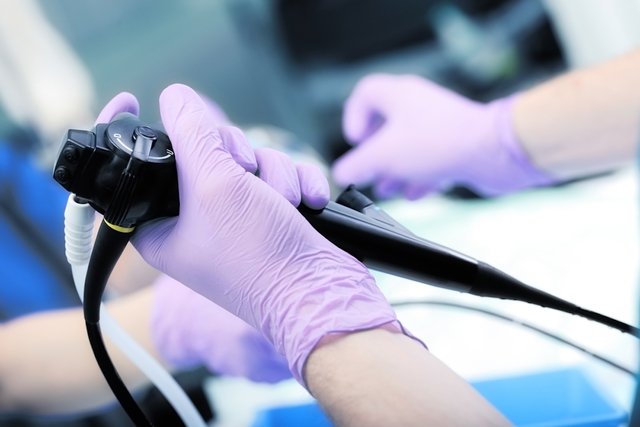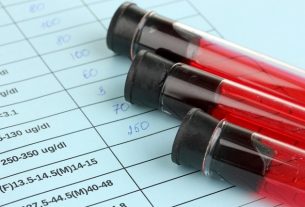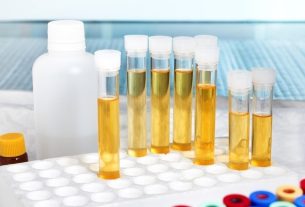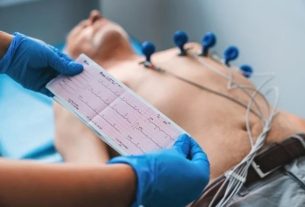Endoscopy is an examination carried out by a gastroenterologist to evaluate the esophagus, stomach and duodenum, which is the initial portion of the intestine, indicated to investigate the cause of symptoms such as stomach pain, heartburn, burning, reflux, difficulty swallowing or gastrointestinal bleeding. , for example.
This examination, also called upper digestive endoscopy, is carried out by introducing a thin tube, called an endoscope, through the mouth into the stomach, to allow a detailed observation of the digestive system, and diagnose health conditions such as gastritis, ulcers or even cancer.
Endoscopy can be performed free of charge by the SUS, as long as it has a medical indication, but it is also carried out in hospitals or private examination clinics, and the results must be analyzed by the general practitioner or gastroenterologist.

What is it for
Upper digestive endoscopy is indicated to diagnose some diseases of the digestive system, such as:
- Gastritis;
- Gastric or duodenal ulcer;
- Esophageal varices;
- Polyps;
- Hiatus hernia;
- Gastroesophageal reflux;
- Celiac disease;
- Esophagitis;
- Narrowing of the esophagus;
- Tumor or cancer of the esophagus, stomach or duodenum.
In addition, upper digestive endoscopy may also be indicated to identify the bacteria Helicobacter pyloriwhich can cause stomach ulcers.
How to prepare for endoscopy
To perform an upper digestive endoscopy, certain precautions must be taken, such as:
- Absolute fasting approximately 8 to 12 hours, before the exam;
- Do not use antacid medicationssuch as cimetidine and omeprazole, as they can interfere with the exam;
- Inform your doctor about the use of anticoagulant medicationssuch as warfarin, heparin, rivaroxaban or acetylsalicylic acid, as the doctor may advise you to stop these medications a few days before the exam;
It is allowed to drink water up to 4 hours before the exam, and if it is necessary to take other medications, only small sips of water should be used to help prevent the stomach from becoming full.
How the exam is carried out
During the exam, the person usually lies on their side and puts an anesthetic in the throat, to reduce the sensitivity of the area and facilitate the passage of the endoscope. Due to the use of anesthetic, the exam does not hurt, and in some cases sedatives can also be used to relax and sleep.
A small plastic object is placed in the mouth so that it remains open throughout the procedure, and to facilitate the passage of the endoscope and improve visualization, the doctor releases air through the device, which after a few minutes can cause a sensation of full stomach.
The images obtained during the exam can be recorded, and during the same procedure the doctor can remove polyps or apply medication to the area.
Furthermore, during endoscopy it is also possible to perform a biopsy, in which a small piece of the organ is removed and sent for analysis in the laboratory, helping to diagnose more serious problems such as infection by H. pylori or cancer. See the symptoms of stomach cancer and how to identify a possible stomach infection. H. pylori.
How long does endoscopy take
Endoscopy usually lasts around 30 minutes, but it is generally advised to stay in the clinic for observation for 30 to 60 minutes, when the effects of the anesthetics wear off.
It is common for the throat to feel numb or a little sore, in addition to feeling full, due to the air placed in the stomach during the exam.
If sedatives have been used, it is advised not to drive or operate heavy machinery for the remainder of the day, as the medication decreases body reflexes.
Possible risks of endoscopy
Complications linked to endoscopy exams are rare and occur mainly after longer procedures, such as polyp removal.
In general, complications that occur are usually due to allergies to the medications used and the presence of problems with the lungs or heart, in addition to perforation of an internal organ and bleeding.
Therefore, if symptoms of fever, difficulty swallowing, abdominal pain, vomiting or dark or bright bloody stools appear after the procedure, you should go to the hospital to seek help to assess whether there were any complications due to the endoscopy.
Bibliography
- ISOLDI, S.; et al. Gastrointestinal endoscopy in children and adults: How do they differ?. You Live Dis. 53. 6; 697-705, 2021
- CAMPINAS CITY HALL. ENDOSCOPY MANUAL. Available at: <http://www.saude.campinas.sp.gov.br/saude/especialidades/manual_endescola.pdf>. Accessed on April 10, 2020
- FMRP-USP. Chapter 6- Clinical Protocol and Regulation of Access and Preparation for Digestive Endoscopy. 2017. Available at: <http://rca.fmrp.usp.br/wp-content/uploads/sites/176/2017/06/432_Digestiva_Diversas_protocolo_clinico_e_de_regulacao_do_acesso_para_endescola_digestiva.pdf>. Accessed on April 10, 2020

Sign up for our newsletter and stay up to date with exclusive news
that can transform your routine!
Warning: Undefined array key "title" in /home/storelat/public_html/wp-content/plugins/link-whisper-premium/templates/frontend/related-posts.php on line 12
Warning: Undefined array key "title_tag" in /home/storelat/public_html/wp-content/plugins/link-whisper-premium/templates/frontend/related-posts.php on line 13



